Tom’s been in touch with his model railroad lift out bridge.
It’s always the simple ideas that work best:
“I thought your readers might be interested in my lift-out bridges!
My layout requires two lift out bridges just inside the room’s door, in order to walk into the human areas within the layout.
In researching how others have done lift-out bridges I saw a lot of complexity. One hobbyist even built his bridges to move up ingeniously above head height like an elevator. I decided I did not want my bridges to be using a very complex method of moving out of the way and back into place.
The method I am using is fairly simple, easy to setup, easy to use.
I placed the approach tracks in place so they define the bridge placement, I then placed thin strips of metal glued to the OSB which is the platform for the layout that the two 1 inch layers of foam rest on. I then cut wood blocks for the bridge to sit on at each end with the bottom of the blocks having a strip of magnetic sheet glued to them.
This magnetic sheet enables the wood blocks to stick to the metal plates to hold bridges in place.
The blocks were fabricated to an exacting height that ensures the bridge track matches perfectly to the approach tracks.
The bridges lift out with little effort and when put back into place are easy to line up the tracks.
They stay in place and do not move with repeated passing of trains over the bridges. The magnetic attraction between the magnetic sheets and the metal is just right to keep bridges in place while also making it easy to lift out the bridges. I built two shelves to place the bridges on when removed.
The electrical connections are made with short wires that plug into a terminal block from KATO with quick release modular plugs.
I had to modify the internal connections inside the terminal block to have two separate circuits since each bridge is on main line loops that are powered separately on the DCC system as power districts.
Since the bridge tracks do not actually touch the mainline tracks at one end, they provide the perfect break that ensures there is not a continuous loop in the DCC circuitry, which is required with DCC, in the information I have.
I finished things off at each end of where the bridges sit, by using flexible concrete walls from Walther’s (Chooch brand), and painting these walls, and wood blocks that are glued to the bridges, a concrete color.
A friend suggested that I should consider a removable flat piece of sheathing to span the area under the bridges. This would be finished off to look like a river that the bridges are passing over.
Tom H.
Colorado, USA”
Model railroad lift out bridge:
A huge big thanks to Tom for sharing his model railroad lift out bridge – simple but clever at the same time.
There’s quite a few of these on the blog now, here’s some others:
That’s all for today folks.
Please do keep ’em coming.
And if today is the day you get started on your layout, the Beginner’s Guide is here.
Best
Al
PS More HO scale train layouts here if that’s your thing.
Need buildings for your layout? Have a look at the Silly Discount bundle.
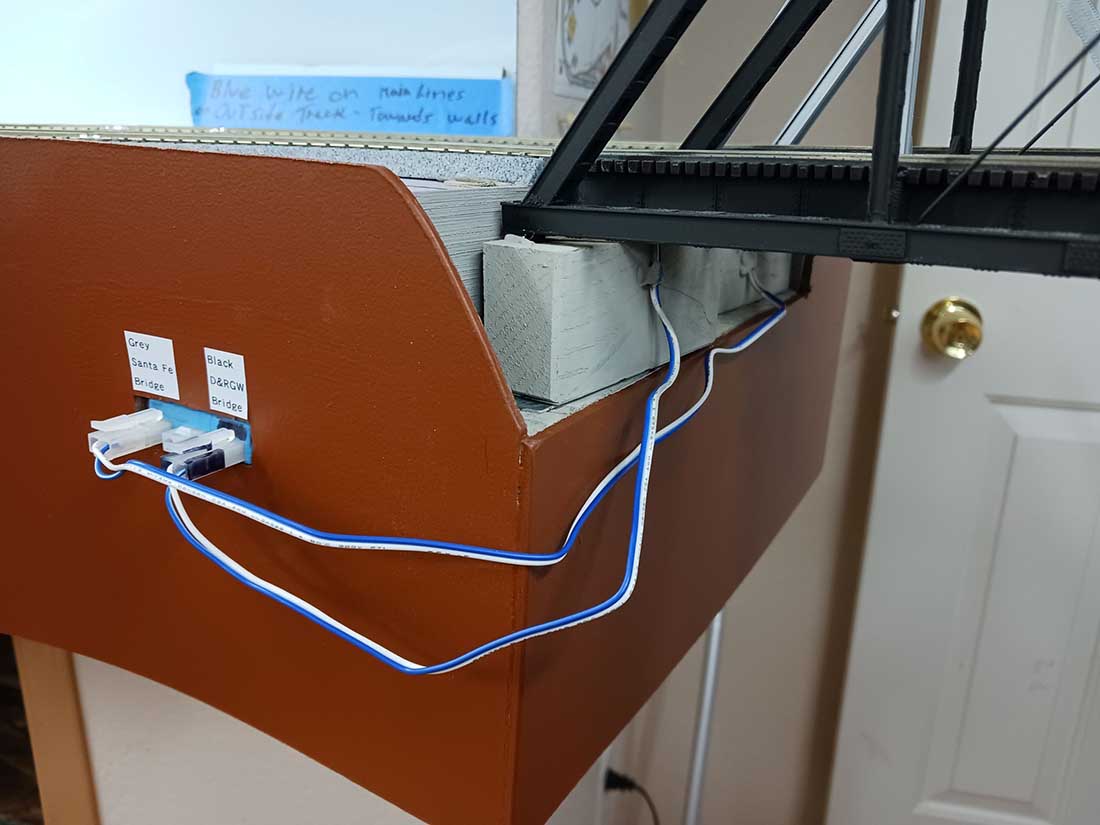
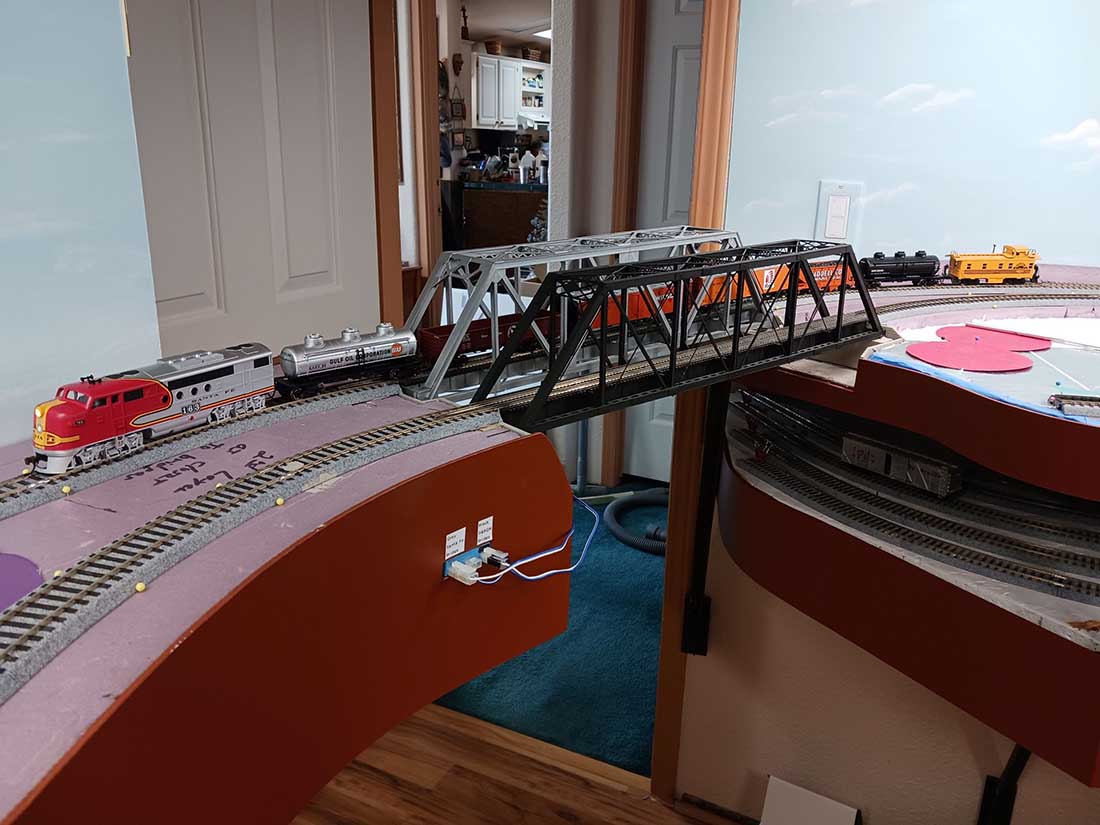

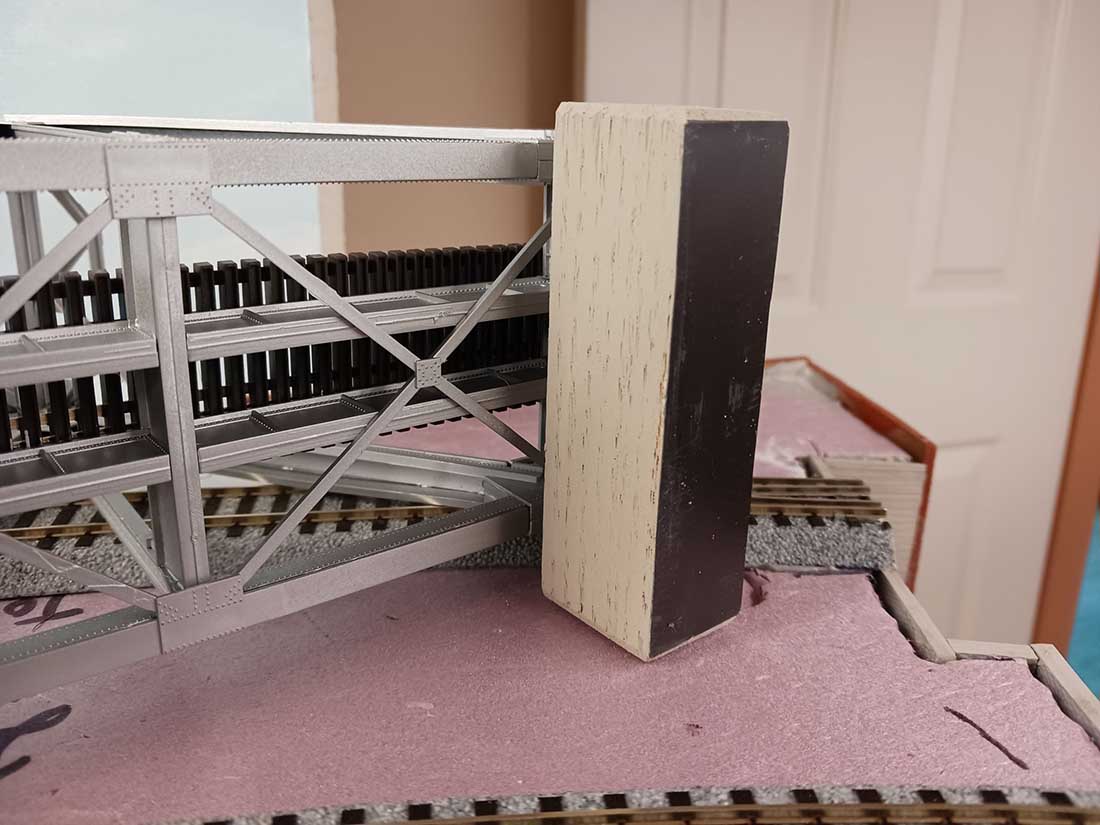
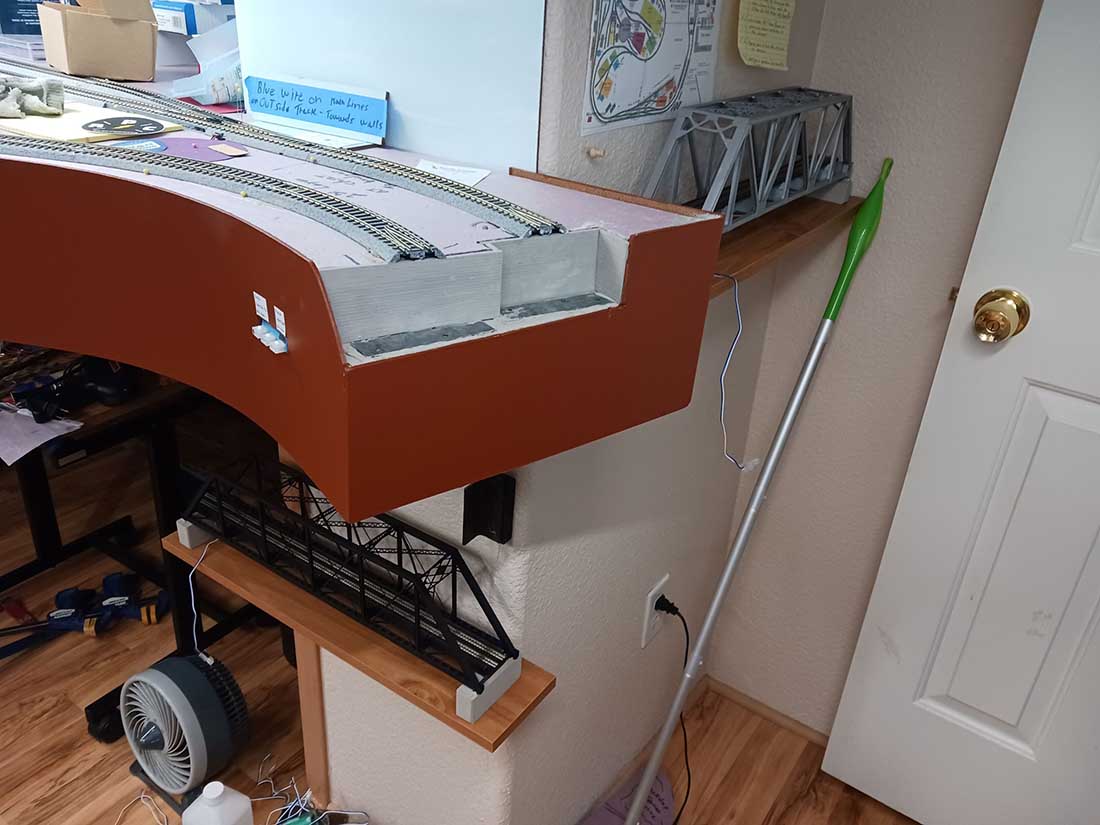
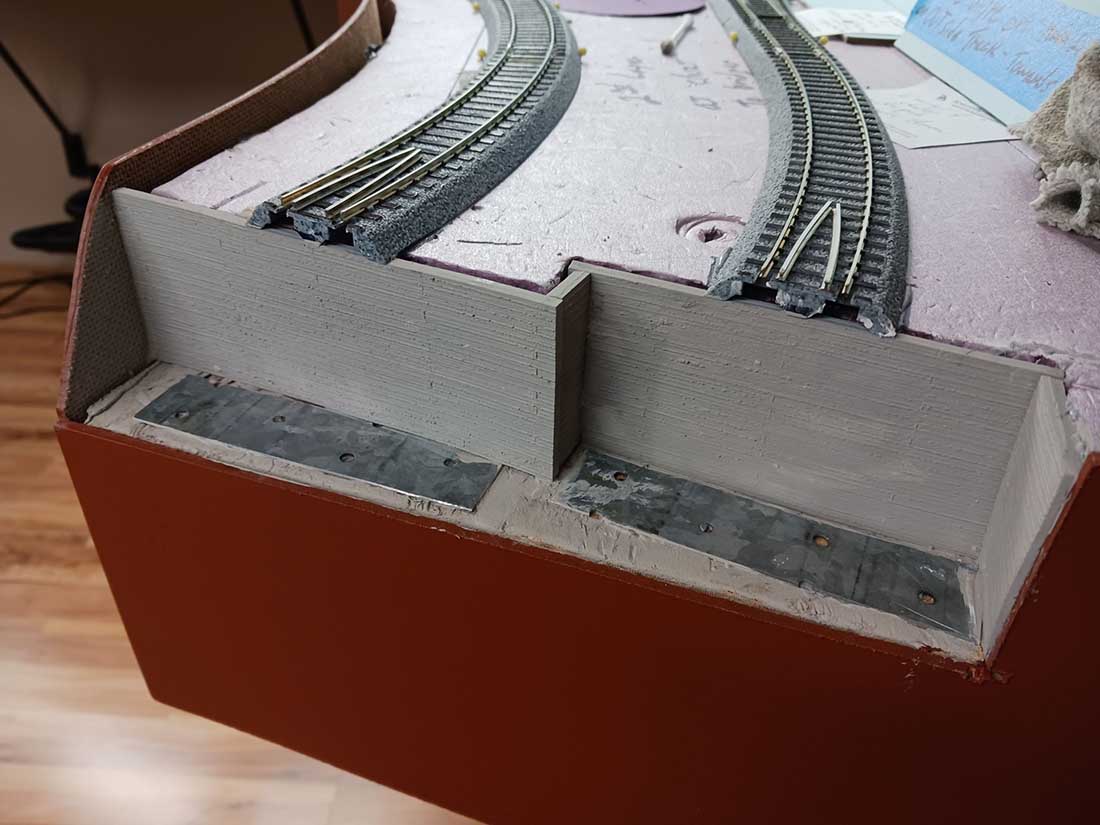



Well thought out. Good clean work.
We have a lift up bridge for our modular layout to get “inside” during operation. Ours is interlocked to provide electrical protection about 3 feet from the opening. This prevents trains from running into the “river.” The modules are DCC.
On another layout I used a piece of a dressing screen as the “bridge” for the lift out..
“Easy in, easy out” takes some work, but worth the effort. Good tips here.
very good. lots of thinking done here.
I’m impressed . Who knew that a simple hobby would ignite such ingenuity. Never ceases to amaze me the great lengths and creativity that model railroaders achieve . Yal should be building rockets and stuff . Way beyond my skill set here . Very impressive indeed .
WOW !!!!! ….. I think this the best idea I have seen so far as long that I have been with Al’s blog, which has been many tears now. Well done, I think that I have found the perfect idea for a lift out bridge. Thank you very much for sharing.
This seems to be a common issue for doorway/entry egress. And you have done a great job with it. I was wondering if your locomotives were DCC and equipped with a capacitor, a keep alive or current keeper, would there still be a need for power through that bridge?
Jim AZ
Looks like you’ve come up with a great way to accomplish this tough task. You must be an engineer by trade, or a retired one such as I. I’m into my latest new layout and am starting with a simple 4×8 and will extend to a couple of sub-areas such as a planned steel mill and a grain elevator. Hope I can pull it off. The bridge idea is great and can add a lot to accessiblity to the side systems. Nice article and I’ll give it a lot of thought on how I managed to solve this interesting problem.
Brilliant!!!
Excellent job on the lift out bridges. I love the simplicity of your design. It’s absolutely ingenious…I would have never thought of using magnetic strips.
Man that’s an awesome job.
My question is: when you open the door to the room, is the bridge in place? and after you lift it out what do you do with it? Is there somewhere to put it while you physically get into the room, or do you just hold it high and twist your body so that you can reset it.
I always have wondered what people with liftout hatches on their layout did with the hatch when it was open.
Terry Idaho/usa